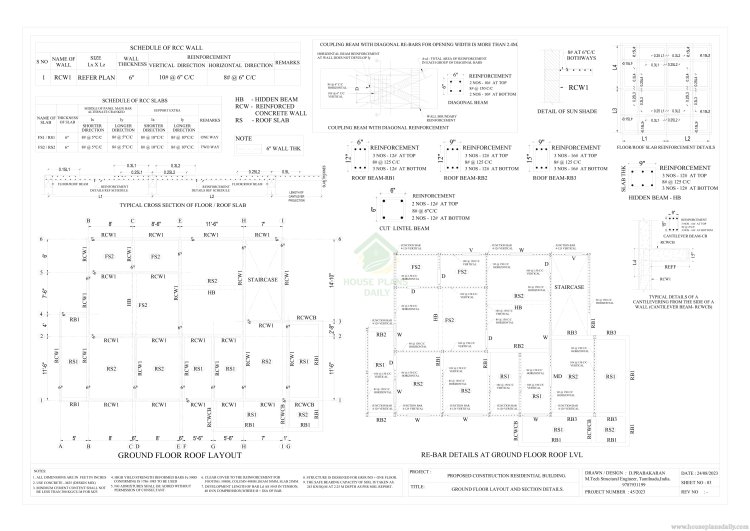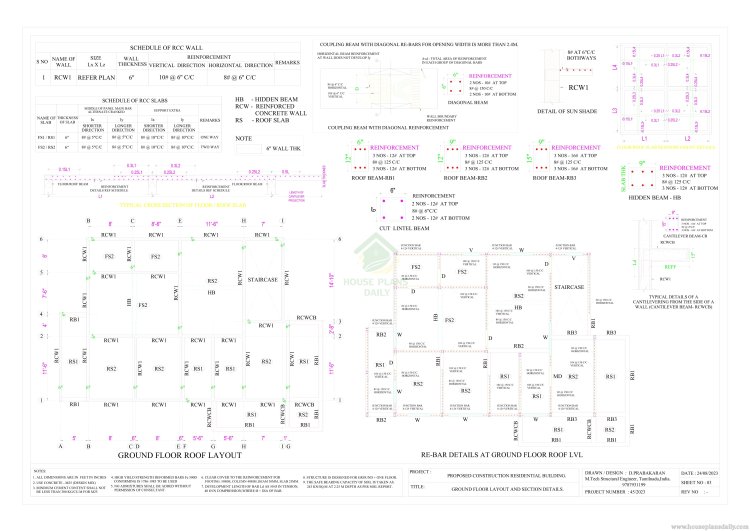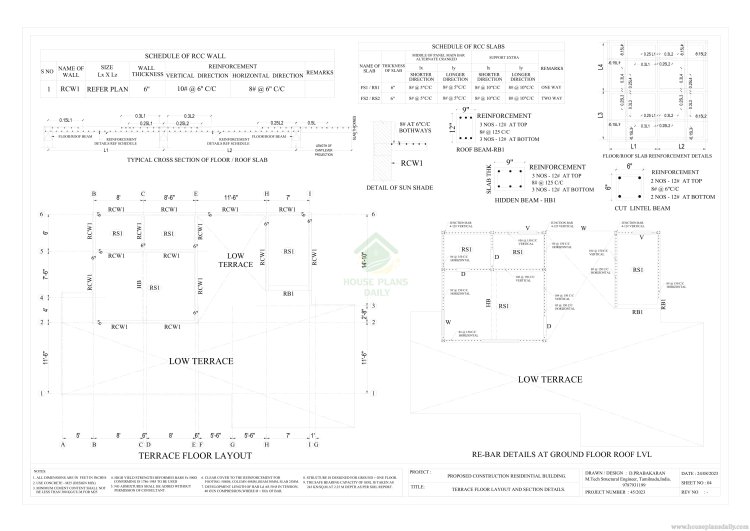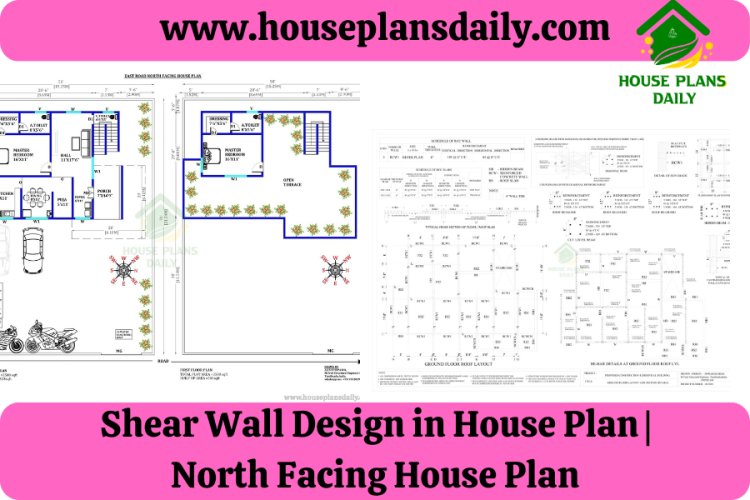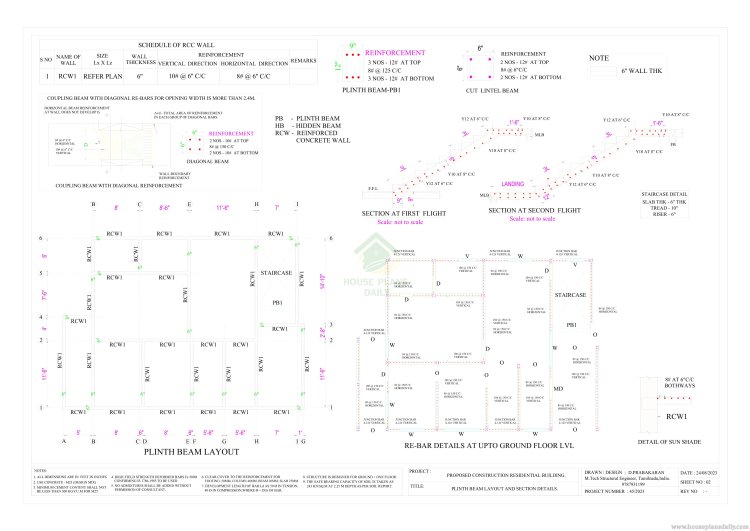Shear Wall Design in House Plan | North Facing House Plan
Building your dream home is an exciting journey filled with countless decisions to make. One of the most important aspects of your dream home's design is the shear wall system.
Unlocking the Secrets of Shear Wall Design: Creating a Strong and Stylish Structure for Your Dream Home
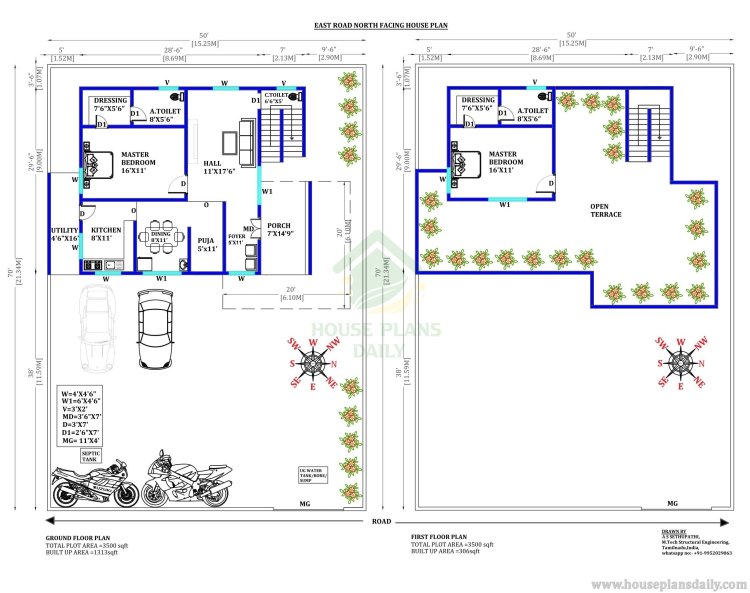
north facing house plan
Building your dream home is an exciting journey filled with countless decisions to make. One of the most important aspects of your dream home's design is the shear wall system. But what exactly is a shear wall, and why is it crucial for creating a strong and stylish structure? In this article, we will uncover the secrets of shear wall design and how it can enhance the structural integrity and aesthetic appeal of your home.
A shear wall is a vertical structural element that resists lateral forces caused by wind, earthquakes, or other external factors. It plays a vital role in distributing these forces evenly throughout the building, protecting it from potential damage. However, shear walls are not just functional; they can also add a touch of elegance and style to your home's architecture.
Unlocking the secrets of shear wall design involves understanding the various types of shear walls, the materials used, and their placement within the building. By designing an effective shear wall system, you can ensure the structural stability of your dream home while creating an aesthetically pleasing living space. So, let's delve into the world of shear wall design and discover how it can transform your vision into reality.
Understanding the Importance of Shear Walls in Structural Stability
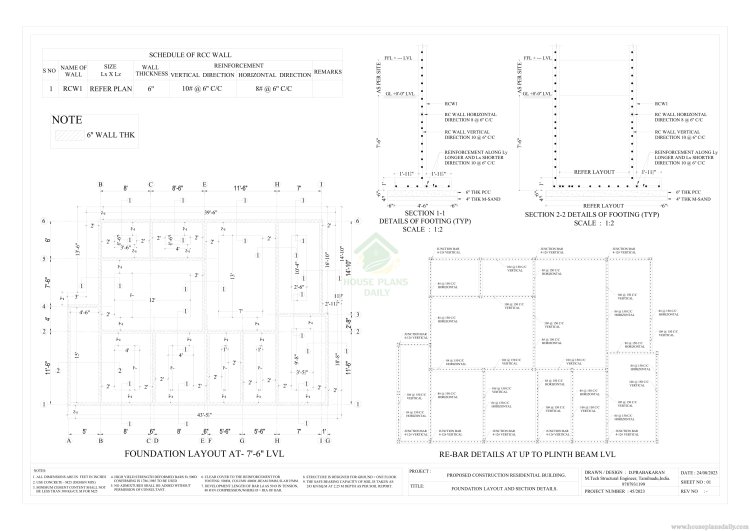
shear wall design in house plan
A shear wall is a vertical structural element that resists lateral forces caused by wind, earthquakes, or other external factors. It plays a vital role in distributing these forces evenly throughout the building, protecting it from potential damage. Shear walls are typically made of reinforced concrete or masonry and are strategically placed in a building's design to provide maximum support and stability.
The primary function of a shear wall is to transfer the lateral loads acting on a building to the foundation, preventing excessive deformation or collapse. Without a properly designed shear wall system, a building is vulnerable to the forces of nature, which can lead to structural failure and compromise the safety of its occupants.
Moreover, shear walls also contribute to the overall stiffness of a building, reducing the likelihood of excessive vibrations during strong winds or earthquakes. By effectively dissipating energy and minimizing lateral displacements, shear walls ensure the structural integrity of the building and provide a safe living environment.
Types of Shear Walls and Their Applications
Shear walls come in various types, each with its unique characteristics and applications. The choice of shear wall type depends on factors such as the building's location, design requirements, and the magnitude of expected lateral forces. Let's explore some common types of shear walls:
- Concrete Shear Walls: These are the most common type of shear walls and are widely used due to their high strength and durability. Concrete shear walls can be either cast-in-place or precast, depending on the construction method. They provide excellent resistance against lateral forces and are suitable for both low-rise and high-rise buildings.
- Masonry Shear Walls: Masonry shear walls are made of brick or concrete block units and are commonly used in residential and low-rise buildings. They are cost-effective, easy to construct, and offer good resistance against lateral forces. However, their strength and stiffness are comparatively lower than concrete shear walls.
- Steel Shear Walls: Steel shear walls consist of steel plates or panels connected to the building's structural frame. They provide high strength and flexibility, making them suitable for buildings in earthquake-prone areas. Steel shear walls are often used in combination with other structural systems to enhance the overall performance and stability of the building.
- Wood Shear Walls: Wood shear walls are commonly used in residential construction, particularly in areas prone to high winds. They are made of plywood or oriented strand board (OSB) panels and provide excellent strength and stiffness. Wood shear walls are lightweight, easy to construct, and have good aesthetics, making them a popular choice among homeowners.
Each type of shear wall has its advantages and limitations, and the selection should be based on the specific requirements and constraints of your dream home's design.
Factors to Consider in Shear Wall Design House
Designing an effective shear wall system requires careful consideration of several factors to ensure optimal performance and structural integrity. Some key factors to consider include:
- Building Codes and Regulations: It is essential to adhere to local building codes and regulations when designing shear walls. These codes provide specific guidelines on the minimum design requirements, material properties, and load combinations to ensure the safety of the structure.
- Lateral Load Analysis: Accurate analysis of the expected lateral loads acting on the building is crucial for shear wall design. This analysis involves considering factors such as wind speed, seismic activity, and building height to determine the magnitude and distribution of lateral forces.
- Shear Wall Placement: The strategic placement of shear walls within the building is critical for their effectiveness. Shear walls should be located at the corners and ends of the building, as well as along the building's perimeter, to provide maximum resistance against lateral forces. Additionally, interior shear walls can be used to enhance the overall stiffness and stability of the structure.
- Material Selection: The choice of materials for shear wall construction depends on factors such as cost, availability, structural requirements, and architectural considerations. Common materials include reinforced concrete, masonry, steel, and wood. Each material has its unique properties, and the selection should be based on the specific needs and constraints of the project.
- Connection Details: Proper connection details between shear walls and other structural elements are crucial for ensuring the transfer of forces and maintaining the overall stability of the building. The connections should be designed to resist shear, uplift, and overturning forces, providing a robust and reliable system.
By carefully considering these factors in the shear wall design process, you can create a structure that not only meets the required safety standards but also enhances the aesthetic appeal of your dream home.
Shear Wall Design Calculations and Code Requirements

Shear wall design
Designing shear walls involves performing calculations to determine the required dimensions, reinforcement, and detailing. These calculations are based on the specific design requirements, load conditions, and material properties. Additionally, they must comply with the relevant building codes and standards.
The design of shear walls typically involves analyzing the flexural, shear, and axial forces acting on the wall. The design calculations consider factors such as the building's height, aspect ratio, location, and expected lateral loads. The goal is to ensure that the shear wall can resist the applied forces without exceeding the allowable stresses or displacements.
Building codes and standards provide specific requirements for shear wall design, including minimum thickness, reinforcement ratios, detailing, and load combinations. These codes ensure that the shear wall system is designed to withstand the forces it will encounter during its lifetime, providing a safe and reliable structure.
It is crucial to work with a qualified structural engineer or design professional who has expertise in shear wall design and is familiar with the applicable building codes. They will ensure that the design calculations and code requirements are properly implemented, resulting in a shear wall system that meets the necessary structural and safety standards.
Design Considerations for Aesthetics and Architectural Integration
While shear walls primarily serve a structural function, they can also contribute to the overall aesthetics and architectural integration of your dream home. With careful design considerations, shear walls can be seamlessly integrated into the building's design, enhancing its visual appeal.
- Architectural Features: Shear walls can be designed with architectural features such as recesses, protrusions, or patterns to add visual interest and create a unique design element. These features can be achieved using formwork during the concrete pouring process or by incorporating decorative finishes on the surface of the wall.
- Material Finishes: The choice of material finishes for shear walls can significantly impact the overall aesthetics of the building. For example, exposed concrete shear walls can create a modern and industrial look, while textured finishes or cladding materials can add warmth and character. It is important to consider the desired architectural style and select materials that complement the overall design concept.
- Color and Lighting: The color of shear walls can be selected to create a visual contrast or harmony with the surrounding elements. Lighting fixtures can also be strategically placed to highlight the shear walls and create a dramatic effect. These design elements can transform shear walls into focal points that enhance the overall ambiance of the living space.
By incorporating these design considerations, shear walls can become architectural features that not only provide structural support but also add a touch of elegance and style to your dream home.
Common Challenges in Shear Wall Design and How to Overcome Them
Designing shear walls can present various challenges that need to be addressed to ensure a successful and efficient design. Some common challenges include:
- Building Layout Constraints: The layout of the building, such as the presence of openings or irregular shapes, can pose challenges in shear wall design. It is essential to carefully analyze the load paths and consider appropriate design modifications to maintain the integrity of the shear wall system.
- Foundation Design: The design of the foundation plays a crucial role in the performance of shear walls. It is important to ensure that the foundation can adequately support the vertical and lateral loads from the shear walls. Proper coordination between the structural engineer and geotechnical engineer is necessary to determine the appropriate foundation design.
- Construction Constraints: Shear wall construction can be complex, requiring coordination between different trades and careful execution of construction details. It is important to address constructability issues early in the design process and work closely with the contractor to ensure that the design can be effectively implemented.
- Code Compliance: Meeting the requirements of building codes and standards can be challenging, especially in areas with stringent seismic or wind design criteria. It is crucial to stay updated with the latest code provisions and work closely with a design professional who has expertise in shear wall design to ensure compliance.
By identifying and addressing these challenges early in the design process, you can minimize potential issues and ensure a smooth and efficient construction process.
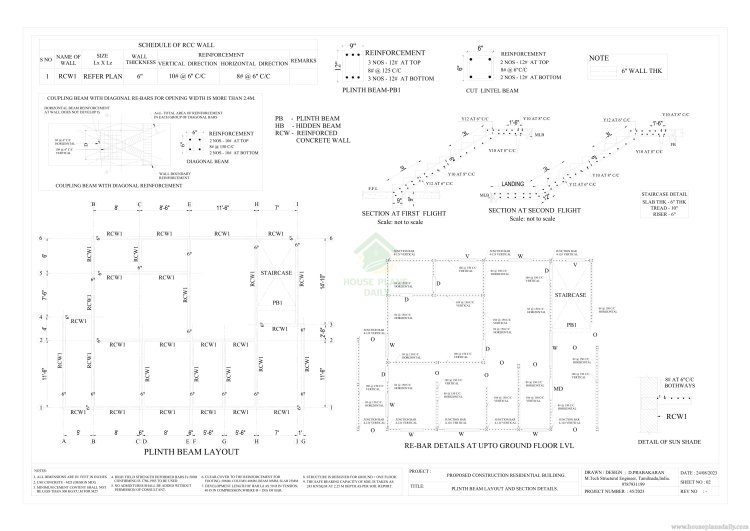
Case Studies of Successful Shear Wall Designs
To further illustrate the impact of shear wall design on the strength and style of your dream home, let's explore a few case studies of successful shear wall designs:
- The Shard, London: The Shard is an iconic skyscraper in London with an impressive shear wall system. The building's design incorporates a network of vertical and inclined shear walls that provide stability against wind and seismic forces. The shear walls are exposed on the building's exterior, creating a distinctive architectural feature.
- Burj Khalifa, Dubai: Burj Khalifa, the tallest building in the world, features a robust shear wall system that ensures structural stability. The building's design incorporates a central core of reinforced concrete shear walls that provide resistance against wind and seismic forces. The shear walls are concealed within the building's interior, allowing for uninterrupted views and a sleek architectural appearance.
- Villa Savoye, France: Villa Savoye is a modernist masterpiece designed by Le Corbusier. The building's design incorporates shear walls made of reinforced concrete that serve both structural and architectural purposes. The shear walls are strategically placed to provide stability against lateral forces while creating a visually striking facade.
These case studies highlight the diverse applications and design possibilities of shear walls in creating structurally sound yet visually appealing buildings.
Tips for Incorporating Shear Walls in Your Dream Home Design
If you are considering incorporating shear walls in your dream home design, here are some tips to keep in mind:
- Early Collaboration: Involve a qualified structural engineer or design professional early in the design process to ensure that shear walls are integrated seamlessly into the overall architectural concept.
- Balance Structural and Aesthetic Considerations: Strive to strike a balance between structural requirements and architectural aesthetics. Work closely with the design professional to select materials, finishes, and design features that enhance both the structural integrity and visual appeal of the shear walls.
- Consider Future Expansion: Anticipate future expansion or remodeling needs when designing shear walls. Incorporate flexibility in the design to accommodate potential changes or additions to the building without compromising its structural integrity.
- Maintenance and Durability: Pay attention to the maintenance and durability requirements of the selected shear wall materials. Choose materials that are resistant to weathering, corrosion, and other potential deterioration factors to ensure the longevity of your dream home.
By following these tips, you can create a dream home design that seamlessly integrates shear walls, providing both structural strength and aesthetic appeal.
Conclusion: The Impact of Shear Wall Design on the Strength and Style of Your Home

shear wall design pdf
In conclusion, shear walls are a critical component of any building's structural system. They play a vital role in distributing lateral forces and ensuring the overall stability and safety of the structure. However, shear walls are not just functional; they can also contribute to the architectural aesthetics and visual appeal of your dream home.
By understanding the importance of shear walls in structural stability, exploring the various types and their applications, considering key design factors, and addressing common challenges, you can unlock the secrets of shear wall design. With careful planning and collaboration with design professionals, you can create a strong and stylish structure that reflects your vision and provides a safe and comfortable living environment for years to come. So, embrace the power of shear walls and embark on a journey to build your dream home with confidence and creativity.
